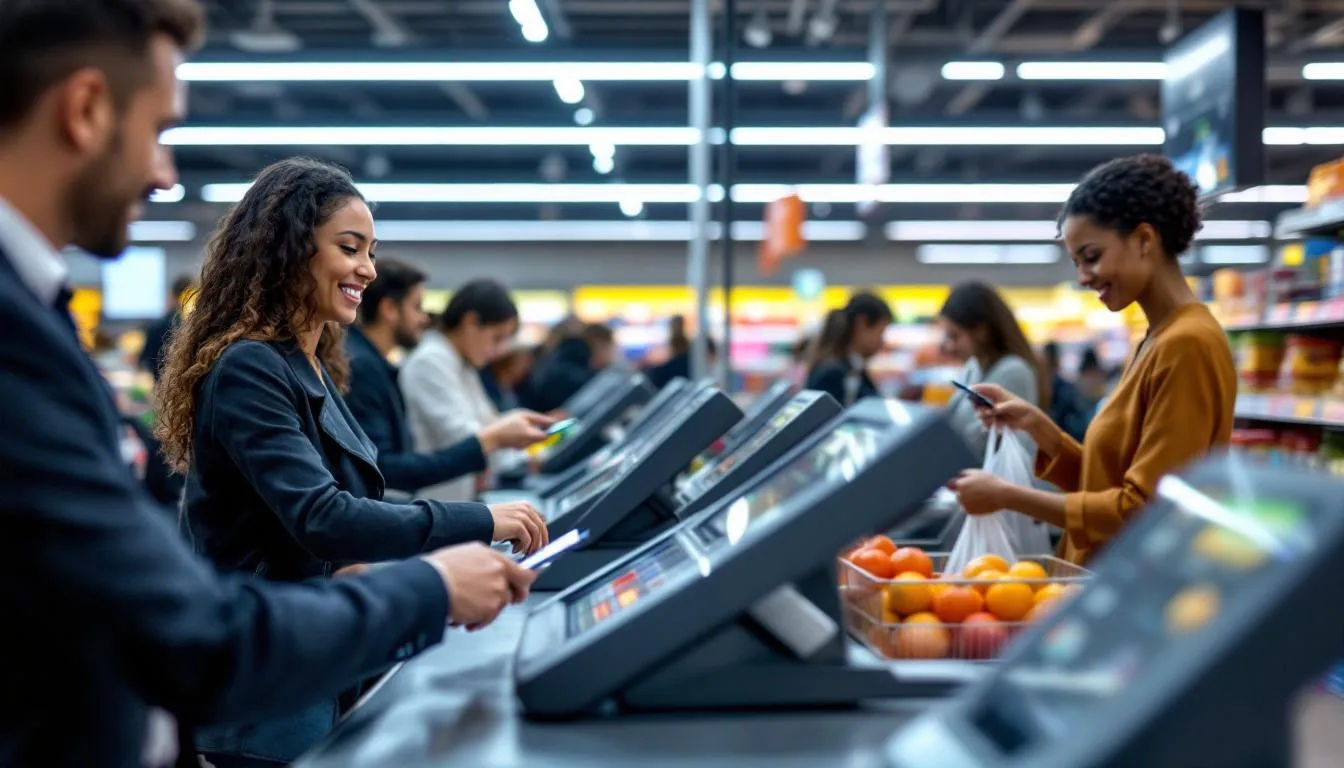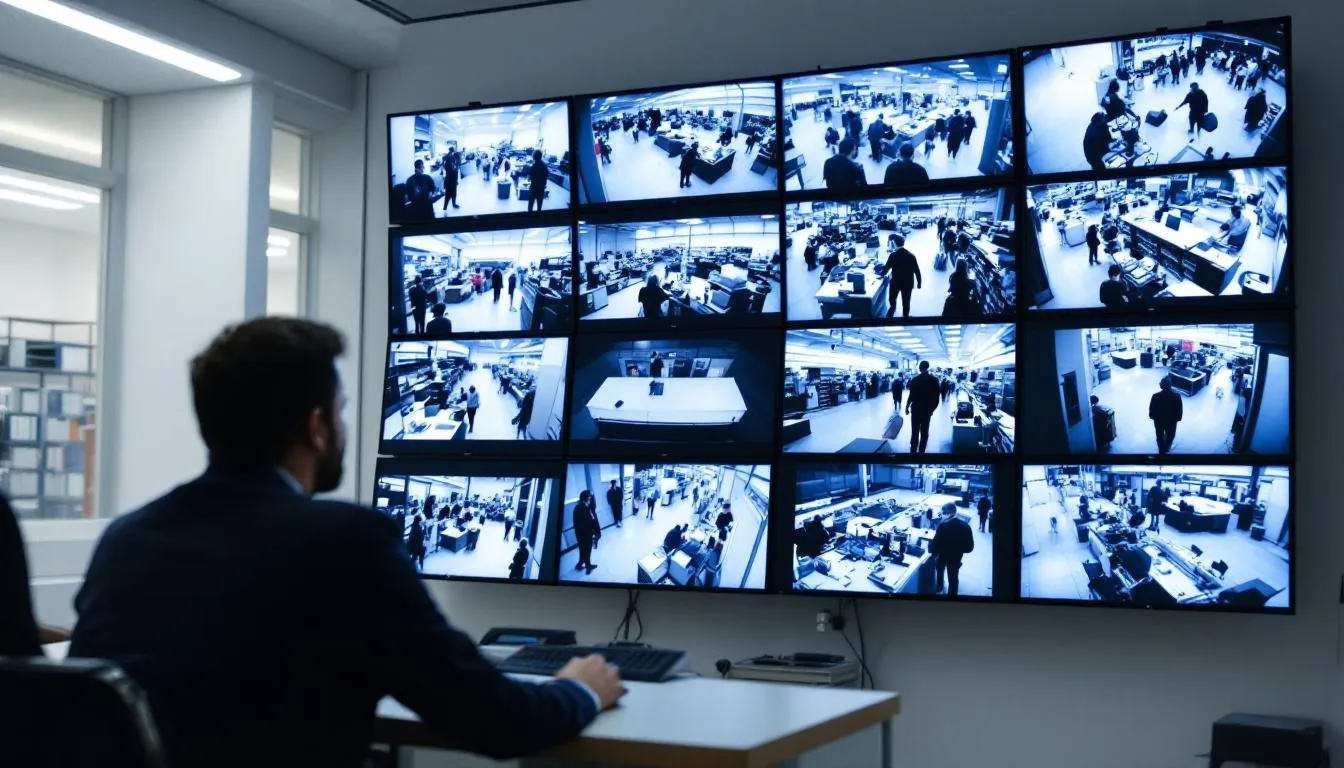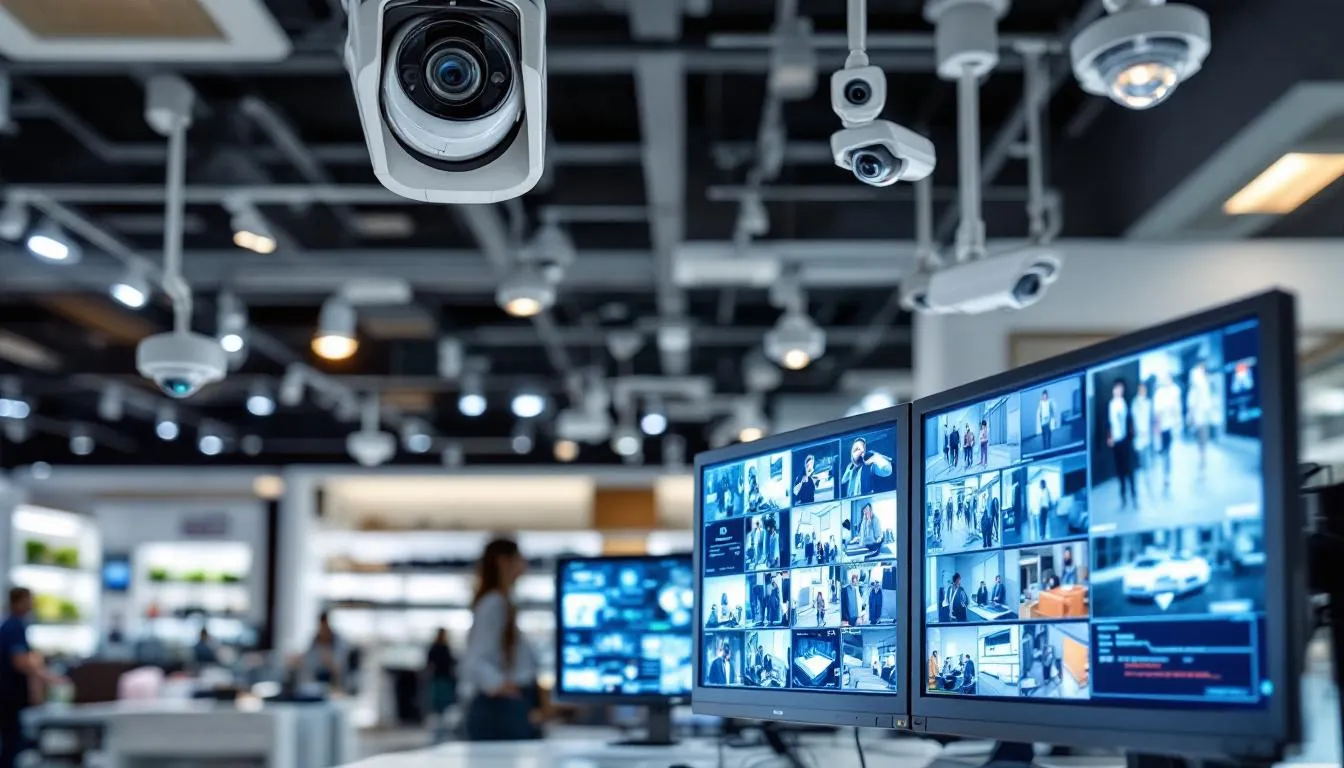The Loss Prevention Industry Has Been Sounding the Theft Alarm on Self-Checkout for Years: Theft is a Serious Problem for Retailers and the Financial Losses are Material – There Was a Time When the Biggest Source of Retail Shrink was Internal, That’s Not the Case Anymore
For years, the loss prevention industry has been sounding the theft alarm on self checkout systems, warning retailers that these convenient technologies come with a steep price. What began as isolated concerns from security executives has evolved into a retail crisis of unprecedented proportions. The financial losses are material, the trends are accelerating, and there was a time when the biggest source of retail shrink was internal—that’s not the case anymore. Industry studies show that the brands represent a wide range of retail sectors, from grocery and apparel to electronics and home goods, highlighting the diversity of businesses impacted by self-checkout theft.
The transformation of today’s retail crime landscape represents a fundamental shift in how theft occurs and where retailers must focus their asset protection efforts. Recent research included data from retail brands which accounted for a significant share of total retail sales, underscoring the scale of the crisis. As self checkouts have proliferated across retail sectors, so too have the sophisticated methods criminals use to exploit these systems. In today’s retail crime landscape, the rising retail theft landscape now presents challenges that extend far beyond simple shoplifting incidents to encompass organized retail crime, workplace violence, and complex multi-person theft operations.

Loss Prevention Warnings About Self-Checkout Vulnerabilities
The alarm bells have been ringing for years. Since the early adoption of self checkout technology, prevention and security executives, loss prevention research council experts, and senior loss prevention professionals have consistently warned that these systems create significant theft opportunities due to reduced oversight. The warnings weren’t theoretical—they were based on emerging data showing theft rates that far exceeded traditional checkout methods.
Research conducted online among senior loss prevention and asset protection professionals revealed that theft at self checkout lanes averages 3.5% to 4% of sales compared to less than 1% at staffed checkout lanes. This represents a four-fold increase in shrinkage rates, a statistic that sent shockwaves through the retail industry when first documented. The research community has played a key role in studying self-checkout theft, collaborating with industry stakeholders to analyze trends and develop solutions.
The core vulnerability stems from a fundamental design flaw: fewer store associates monitoring self checkout areas leads to increased opportunities for retail theft. While traditional checkout lanes have a trained employee overseeing every transaction, self checkout systems rely primarily on customer honesty and basic machine detection—a combination that has proven insufficient against determined shoplifters.
Early warnings from the loss prevention community highlighted specific exploitation methods: customers scanning lower-priced items for expensive products, deliberately failing to scan items, manipulating weight sensors on produce scales, and using fraudulent barcodes. These techniques, collectively known as “sweethearting,” evolved significantly as criminals became more sophisticated in their approach to defeating self checkout systems.
The retail sector’s initial response was often dismissive, with many retailers viewing these warnings as resistance to technological progress. However, the financial reality soon became impossible to ignore as shrink rates climbed and the average number of shoplifting incidents per location increased dramatically. Studies by the research council and sponsored by industry partners further validated these concerns, emphasizing the need for collaborative solutions.
Material Financial Impact on Retailers
Retailers surveyed experienced a dramatic surge in shoplifting and theft incidents over recent years, underscoring the scale of the problem facing the industry.
The financial toll of retail theft has reached catastrophic proportions. Retailers reported a 93% increase in shoplifting incidents from 2019 to 2023, accompanied by a 90% rise in dollar loss per incident. These aren’t marginal increases—they represent a fundamental breakdown in traditional loss prevention strategies.
Current data reveals that an average of 177 shoplifting incidents occur daily per retailer in 2023, with some retail sectors experiencing over 1,000 incidents per day. When extrapolated across the industry, these numbers paint a picture of systematic theft that threatens the viability of many retail operations. Such incidents include not only shoplifting but also organized retail crime and violent encounters, further highlighting the severity of the crisis.
A comprehensive study representing brands that accounted for 1.52 trillion in annual sales—roughly 30% of total retail sales—demonstrates the widespread nature of this crisis. The research, sponsored by sensormatic solutions and conducted through the loss prevention research council, provides unprecedented insight into the scope of financial damage.
Retailers are projected to lose between $115 billion and $140 billion to theft in 2025, representing a dramatic increase from $93.9 billion in 2021 and $86.6 billion in 2022. This upward trajectory shows no signs of slowing, with self checkout-related theft being a primary driver of these escalating losses.
The impact extends beyond raw dollar amounts. Shrink rates averaging 3.75% of inventory at self checkout locations directly impact profit margins in an industry where net margins typically range from 1% to 3%. For many retailers, theft losses now exceed their total annual profits, forcing difficult decisions about store locations, product availability, and customer experience.
Respondents believe federal legislation is necessary to address the growing threat of retail crime, with many in the industry supporting government action as a critical step to improve enforcement and reduce theft and violence.

The Shift from Internal to External Theft Sources
The retail industry has witnessed a fundamental transformation in the sources of inventory shrinkage. There was a time when the biggest source of retail shrink was internal—employee theft dominated loss categories, often accounting for 40% to 50% of total shrinkage. That’s not the case anymore.
Historical data from the 1990s and early 2000s consistently showed internal theft as the primary concern for loss prevention professionals. Store employees had access to inventory, understood security protocols, and could manipulate systems from within. This made employee theft both more damaging per incident and harder to detect than external shoplifting.
The proliferation of self checkout technology fundamentally altered this equation. While internal theft remains a concern, external theft—particularly sophisticated shoplifting at self service terminals—has become the dominant source of retail shrink. Current data from countries like Australia shows that 71% of retail shrink now comes from external sources, representing a complete reversal of historical patterns.
This shift reflects both technological vulnerabilities and changing criminal behavior. Self checkout systems removed the human barrier that previously made shoplifting more challenging and risky. Simultaneously, reduced staffing levels in many stores decreased the likelihood of detection for external thieves.
The transformation has forced a complete reevaluation of loss prevention strategies. Traditional approaches focused heavily on employee monitoring, background checks, and internal controls. Today’s retail crime landscape demands sophisticated external theft prevention, advanced surveillance systems, and real-time detection capabilities for customer-facing areas.
Organized criminal networks have also contributed to this shift. Shoplifting connected to organized retail crime has become a significant concern, as professional theft rings now target self checkout areas systematically, using coordinated tactics that exploit the reduced oversight these systems provide. The result is external theft that rivals the sophistication and financial impact once associated primarily with internal crime.
Rising Organized Retail Crime and Multi-Person Theft
The emergence of organized retail crime as a dominant force in retail theft represents one of the most significant developments in loss prevention. A staggering 76% of retailers report increased concern about organized retail crime compared to the previous year, highlighting the growing sophistication and coordination of criminal enterprises targeting retail environments. These threats impact a wide range of retail sectors including specialty, underscoring the need for industry-wide collaboration to address the evolving landscape of retail crime.
Organized retail crime-related shoplifting incidents rose 57% from 2022 to 2023 among retailers tracking these crimes specifically. This dramatic increase reflects not just more frequent incidents, but more sophisticated operations that target high-value merchandise and exploit systemic vulnerabilities in retail security.
Particularly concerning is the rise in multi person theft incidents. Approximately 62% of retailers report increased concern over coordinated theft by groups of two to three individuals. These operations often involve elaborate coordination: one person distracts store associates while others exploit self checkout vulnerabilities, or teams that work together to defeat security measures through overwhelming numbers and coordinated timing.
Self checkout areas have become prime targets for these organized efforts because they offer reduced supervision and multiple escape routes. Criminal teams can position themselves at adjacent terminals, share information about which products trigger alarms, and coordinate their theft activities to maximize success while minimizing detection risk.
The financial impact of organized retail crime extends far beyond the immediate theft losses. These criminal networks often steal multiple items with the intent to resell them through online marketplaces or underground distribution channels. The average theft value per organized crime incident significantly exceeds that of opportunistic shoplifting, with some incidents involving thousands of dollars in merchandise.
Large retailers have been forced to implement specialized training programs for store associates to recognize the signs of organized theft operations. However, the challenge remains that self checkout systems, by design, reduce the number of employees available to monitor customer behavior and identify suspicious activities.

Escalating Violence and Aggression in Retail Theft
The evolution of retail theft has brought an alarming increase in violence and aggression that poses serious risks to store associates and customers. An overwhelming 73% of retailers report more aggression from shoplifters compared to the previous year, with 91% reporting increased aggression compared to 2019 levels. This escalation represents a fundamental shift in the nature of retail crime, with more violence now being reported during theft incidents than ever before.
The statistics on retail theft violence 2024 paint a disturbing picture. Incidents involving weapons rose 39% between 2022 and 2023, while violent threats increased by 42% during the same period. These aren’t isolated incidents—they represent a systematic increase in the willingness of criminals to use intimidation and violence when confronted about theft.
Self checkout areas present unique challenges for maintaining safe retail environments. When theft is detected at these terminals, the confrontation often occurs between store associates and customers in relatively isolated areas of the store. The lack of immediate backup and the customer’s perception that they can argue their way out of consequences contribute to more aggressive interactions.
The impact on store employees has been particularly severe. Protecting store associates has become a primary concern, with 71% of retailers increasing budgets for employee training related to workplace violence. Many retail operations have implemented new protocols that prioritize employee safety over theft recovery, recognizing that no merchandise is worth risking physical harm to staff members. These new protocols and training programs are focused on mitigating crime by proactively reducing opportunities for violence and theft before they escalate.
Violence and retail crime now intersect in ways that make traditional loss prevention approaches inadequate. Store associates must be trained not only to identify theft but to de-escalate potentially dangerous situations. The challenge is particularly acute at self checkout locations where employees may be working alone or with minimal backup.
The rise in aggression has also affected customer experience. As retailers implement more security measures to combat theft and protect employees, legitimate customers may encounter locked merchandise, increased surveillance, and more restrictive policies. This creates a delicate balance between security needs and maintaining retail environments safe and welcoming for paying customers.
Affected Parties: Retailers, Employees, and Communities
The rising retail theft landscape is not just a challenge for retailers—it’s a crisis that reverberates through every layer of the retail industry, impacting employees, customers, and entire communities. According to the National Retail Federation, the impact of retail theft violence 2024 has become a major concern, with the average number of shoplifting incidents per year skyrocketing by 93% in 2023 compared to 2019. This surge in retail crime has led to a staggering 90% increase in dollar loss over the same period, underscoring the material threat to the industry’s stability.
Retail sectors across the board are feeling the strain, but luxury retail, mass merchandise, and grocery stores are particularly vulnerable. Large retailers, in particular, are facing an unprecedented volume of incidents, with some reporting over 1,000 shoplifting incidents daily. The prevalence of multi person theft incidents—where groups of two or three individuals coordinate to steal multiple items—has added a new layer of complexity to the ongoing battle against retail crime.
For store associates and customers, the consequences are deeply personal. Protecting store associates has become a top priority, as the threat of workplace violence grows alongside the number of shoplifting incidents. In response, 71% of retailers have increased their budgets to support employee training related to workplace violence, recognizing that the safety of their teams is paramount in today’s retail environments. Employee training now extends beyond theft prevention to include strategies for de-escalating potentially violent situations, reflecting the complex and sophisticated challenge retailers continue to face.
The impact of retail theft extends far beyond the walls of individual stores. With $1.52 trillion in annual sales at stake—representing nearly a third of total retail sales—the ripple effects of retail crime are felt throughout local economies. When retailers are forced to close locations, reduce product offerings, or increase prices to offset losses, entire communities suffer. The loss of jobs, diminished access to goods, and reduced economic activity are all part of the broader impact of retail theft.
Recognizing the scale of the problem, retailers are increasingly turning to advanced asset protection tools and collaborative strategies. The Loss Prevention Research Council, sponsored by Sensormatic Solutions, has emphasized the importance of adopting innovative solutions to combat organized retail crime. These efforts are supported by solution providers and local law enforcement, who play a critical role in helping retailers respond to and prevent retail crime.
At the policy level, there is a growing consensus that federal legislation is essential to effectively combat organized retail crime. An overwhelming 94% of retailers surveyed believe that coordinated federal action is necessary to address the interstate nature of these crimes and to support local efforts. Retailers view federal legislation as a crucial step in the ongoing battle to protect store associates, customers, and the economic health of their communities.
As the retail industry continues to navigate this complex landscape, the need for a whole-community approach has never been clearer. By investing in employee training, implementing advanced security measures, and fostering collaboration with law enforcement and solution providers, retailers can help create safer, more secure retail environments. Ultimately, reducing the impact of retail theft and violence will require sustained commitment from all stakeholders—retailers, employees, and communities working together to safeguard the future of the retail sector.
Industry Response and Legislative Solutions
The retail industry has mobilized on multiple fronts to combat the escalating theft crisis, with particular focus on addressing vulnerabilities in self checkout systems. Cities like Long Beach have begun implementing targeted legislation requiring more staff per self checkout lane and limiting the number of items customers can process through these systems.
The legislative response reflects growing recognition that current laws and enforcement mechanisms are inadequate for addressing modern retail crime. An overwhelming 94% of retailers support federal legislation like the combating organized retail crime act, viewing federal coordination as essential for effectively combat organized retail crime that crosses state boundaries.
However, the industry response hasn’t been uniform. Major retailers like Target and Walmart have pushed back against some new shoplifting laws while simultaneously continuing their self checkout expansion. This apparent contradiction reflects the complex economics of retail operations, where labor cost savings from automation must be balanced against increased theft losses.
Support for employee training related to theft prevention and violence de-escalation has become a priority across retail sectors. Mass merchandise, grocery, and specialty retailers have all increased their investment in training programs that help store associates identify and respond to theft attempts while maintaining their personal safety.
The emphasis on training reflects a shift from purely technological solutions to comprehensive approaches that combine human judgment with advanced systems. While technology can detect many theft attempts, the complexity of modern retail crime requires well-trained personnel who can make nuanced decisions about when and how to intervene.
Federal legislation advocates argue that local and state-level responses, while valuable, cannot address the interstate nature of much organized retail crime. Criminal networks often operate across multiple jurisdictions, making coordination between local law enforcement agencies essential but challenging to achieve without federal oversight and resources.

Technology and Collaboration Solutions
The fight against retail theft has spurred unprecedented innovation in asset protection tools and collaborative approaches to loss prevention. Advanced surveillance systems specifically designed for self checkout areas now incorporate artificial intelligence and machine learning to identify suspicious behavior patterns in real-time.
Development partnerships between retailers, solutions providers, and research institutions have accelerated the deployment of sophisticated detection systems. Solutions providers play a critical role in advancing retail security by working closely with retailers to develop and implement technologies that predict, prevent, and mitigate theft and violence. These collaborations focus on creating technology that can identify theft attempts without creating friction for legitimate customers, a balance that requires constant refinement and testing.
The loss prevention research council has emerged as a crucial hub for sharing information and best practices across the retail sector. Through research sponsored by sensormatic solutions and other industry leaders, the council provides data-driven insights that help retailers make informed decisions about security investments and operational changes.
Investment in training programs has extended beyond basic theft recognition to include advanced techniques for managing technology-assisted theft. Store associates now receive training on interpreting alerts from AI-powered systems, understanding the legal limitations of theft intervention, and coordinating with local law enforcement when incidents occur.
Enhanced security measures for self-service retail environments include weight verification systems, advanced camera analytics, and real-time transaction monitoring. These technological solutions aim to recreate the oversight that human cashiers traditionally provided while maintaining the efficiency benefits that make self checkout attractive to retailers and customers.
The collaboration between retailers and law enforcement has evolved to include shared databases of known shoplifters, coordinated response protocols for organized retail crime, and joint training programs that help police understand the specific challenges of retail environments. This partnership approach recognizes that the scale and sophistication of modern retail theft requires resources beyond what any single retailer can provide.
How SafetyCamAI Solves Self-Checkout Theft Challenges
SafetyCamAI offers a cutting-edge solution to the vulnerabilities of self checkout systems by combining artificial intelligence with advanced video analytics to detect and prevent theft in real-time. Unlike traditional surveillance that relies on human monitoring, SafetyCamAI’s technology continuously analyzes customer behavior at self checkout terminals to identify suspicious actions such as item mis-scanning, barcode switching, or unusual weight discrepancies.
By integrating seamlessly with existing security infrastructure, SafetyCamAI provides loss prevention teams with instant alerts, enabling rapid intervention before theft escalates. Its AI-driven system learns from patterns of theft and adapts to new tactics employed by organized retail crime groups, making it a dynamic tool in the fight against evolving retail crime.
Moreover, SafetyCamAI enhances employee safety by reducing the need for confrontations; store associates receive timely, actionable information that allows them to respond strategically and safely. The system also supports comprehensive reporting and analytics, offering retailers valuable insights into theft trends, high-risk locations, and effectiveness of prevention measures.
Through its innovative approach, SafetyCamAI helps retailers reduce shrinkage rates at self checkout lanes, protect store associates, and maintain a positive customer experience by minimizing unnecessary disruptions. As part of a broader strategy involving technology, training, and legislative support, SafetyCamAI represents a vital asset in combating the rising retail theft landscape and organized retail crime.
Conclusion
The loss prevention industry’s warnings about self checkout vulnerabilities have proven prophetic. What began as concerns about reduced oversight has evolved into a comprehensive crisis affecting every aspect of retail operations. The financial losses are indeed material, with billions in annual theft representing a major concern for an industry already operating on thin margins.
The shift from internal to external theft sources has fundamentally altered how retailers approach security and loss prevention. Today’s retail crime landscape demands solutions that address not only traditional shoplifting but organized crime networks, violent confrontations, and sophisticated technology exploitation.
As the retail industry continues to grapple with these challenges, the need for coordinated responses involving technology, training, legislation, and law enforcement collaboration has never been clearer. The ongoing battle against retail theft will require sustained effort and innovation from all stakeholders committed to maintaining viable and safe retail environments for employees and customers alike.
The future of retail security will depend on successfully balancing automation benefits with theft prevention, customer convenience with loss control, and operational efficiency with comprehensive protection strategies. This complex and sophisticated challenge requires the continued evolution of both technology and human expertise to ensure that the convenience of self checkout doesn’t come at an unsustainable cost to retailers and, ultimately, consumers.

Leave a Reply